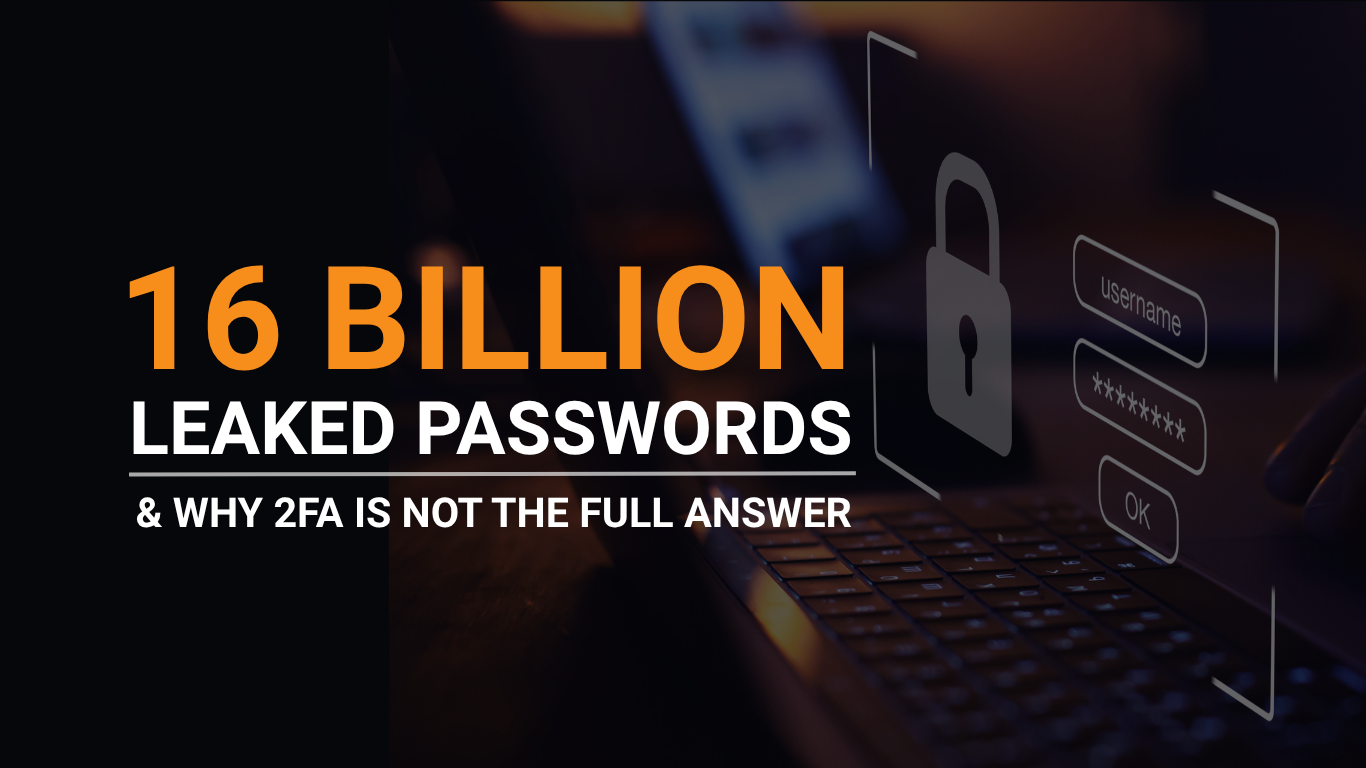16 Billion Leaked Passwords & Why 2FA Is Not The Full Answer
A recent investigation by Cybernews and independent researchers has uncovered a massive leak: over 16 billion unique credentials have been exposed in what is likely the largest dataset of stolen usernames and passwords ever compiled by cybercriminals (source). The credentials were scraped from previous breaches and infostealer malware infections and are now circulating freely on underground forums.
Why It Matters for Your Organization
Apple IDs and Google accounts to GitHub repositories, Facebook profiles, Telegram and government portals. This is full-spectrum access to cloud infrastructure, codebases, internal chats, and authentication gateways.
When threat actors can impersonate legitimate users across dozens of platforms, the attack surface explodes.
Here’s what can happen next:
Account takeover attacks (ATO) across business systems
Stolen credentials allow attackers to impersonate employees and access internal systems undetected.
For example, an attacker logs into your Microsoft 365 admin portal using leaked credentials from a sales manager’s personal email. They set up forwarding rules to silently exfiltrate sensitive client emails and remain undetected for weeks.
Spoofing Campaigns
Leaked credentials make it easier for attackers to impersonate your staff in phishing or fraud attempts. Like a finance team member sending fake payment instructions to vendors.
Credential stuffing in SaaS platforms, M365, and VPNs
Automated tools test leaked usernames and passwords across multiple platforms, exploiting reused or weak credentials. Attackers could successfully log into your company’s project management collaboration tools and download internal engineering documentation.
Credential-based attacks often bypass traditional defenses and go unnoticed without behavioral analytics or continuous monitoring.
Password Reset and 2FA: Not Enough
Yes, the immediate advice is still valid:
- Force password resets
- Enforce two-factor authentication
- Disconnect and re-connect any accounts and services using old credentials
But that’s like locking your door after someone has already stolen the key. You’re still blind to whether someone is already inside.
The Key is Threat Visibility
When stolen credentials can bypass firewalls and endpoint protection entirely, Managed Detection and Response services like NovaMDR can:
- Monitor for suspicious logins and lateral movement
- Detect abuse of privileged accounts in real time
- Get 24/7 cybersecurity experts-led analysis to identify if your organization is being spoofed or targeted
Unlike antivirus or SIEM tools, NovaMDR fuses AI-driven detection with human threat hunting, even across encrypted traffic and unmanaged endpoints



